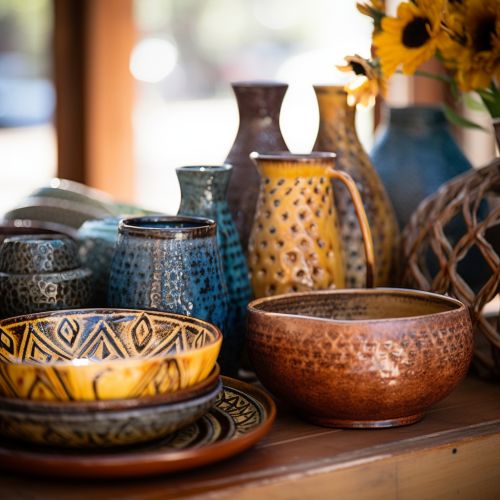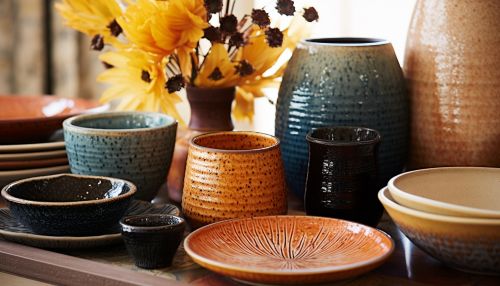Ceramics
Introduction
Ceramics are a broad category of hard, brittle, heat-resistant and corrosion-resistant materials made by shaping and then firing a nonmetallic mineral, such as clay, at a high temperature. The term 'ceramics' comes from the Greek word 'keramos', meaning 'potter's clay'. The earliest known ceramics were pottery objects made from clay, either by itself or mixed with other materials, hardened in fire. Later ceramics were glazed and fired to create a colored, smooth surface. Ceramics now include domestic, industrial and building products and a wide range of ceramic art. In the 20th century, new ceramic materials were developed for use in advanced ceramic engineering, such as in semiconductors read more.
History
The history of ceramics began with the use of natural clay to make pottery in ancient times. The earliest known ceramics date back to the Paleolithic era, where ceramics were used for utility and decorative purposes. With the advent of metalworking, ceramics took on a new role, with many cultures developing methods to create pottery and other ceramic objects with intricate designs and shapes. The development of ceramics was a significant technological advancement, allowing for the creation of a wide range of objects and tools that were not possible with earlier stone technology.
Types of Ceramics
There are three main types of ceramics: earthenware, stoneware, and porcelain. Earthenware is the simplest and least expensive type of ceramic. It is made from clay and fired at low temperatures. Stoneware is a type of ceramic that is fired at high temperatures, making it more durable and less porous than earthenware. Porcelain is a type of ceramic that is made from a special type of clay called kaolin and fired at very high temperatures. This makes it very hard, white, and translucent.
Properties of Ceramics
Ceramics have a number of unique properties that make them useful in a wide range of applications. These include high melting points, low thermal conductivity, high electrical resistance, and high hardness. These properties make ceramics ideal for use in a variety of industrial applications, including electronics, aerospace, and automotive industries.
Ceramic Production
The production of ceramics involves a number of steps, including the mining of raw materials, the preparation of the clay, the shaping of the clay into the desired form, the drying of the clay, and the firing of the clay in a kiln. The final step in the production process is the glazing of the ceramic, which gives it a smooth, shiny surface and makes it more resistant to moisture.
Applications of Ceramics
Ceramics are used in a wide range of applications, from pottery and sculpture to industrial and technological uses. In the home, ceramics are used in everything from dishes and cookware to tile and decorative objects. In industry, ceramics are used in a variety of applications, including in the manufacture of electronics, aerospace components, and automotive parts. Ceramics are also used in medicine, where they are used in dental implants and joint replacements.


